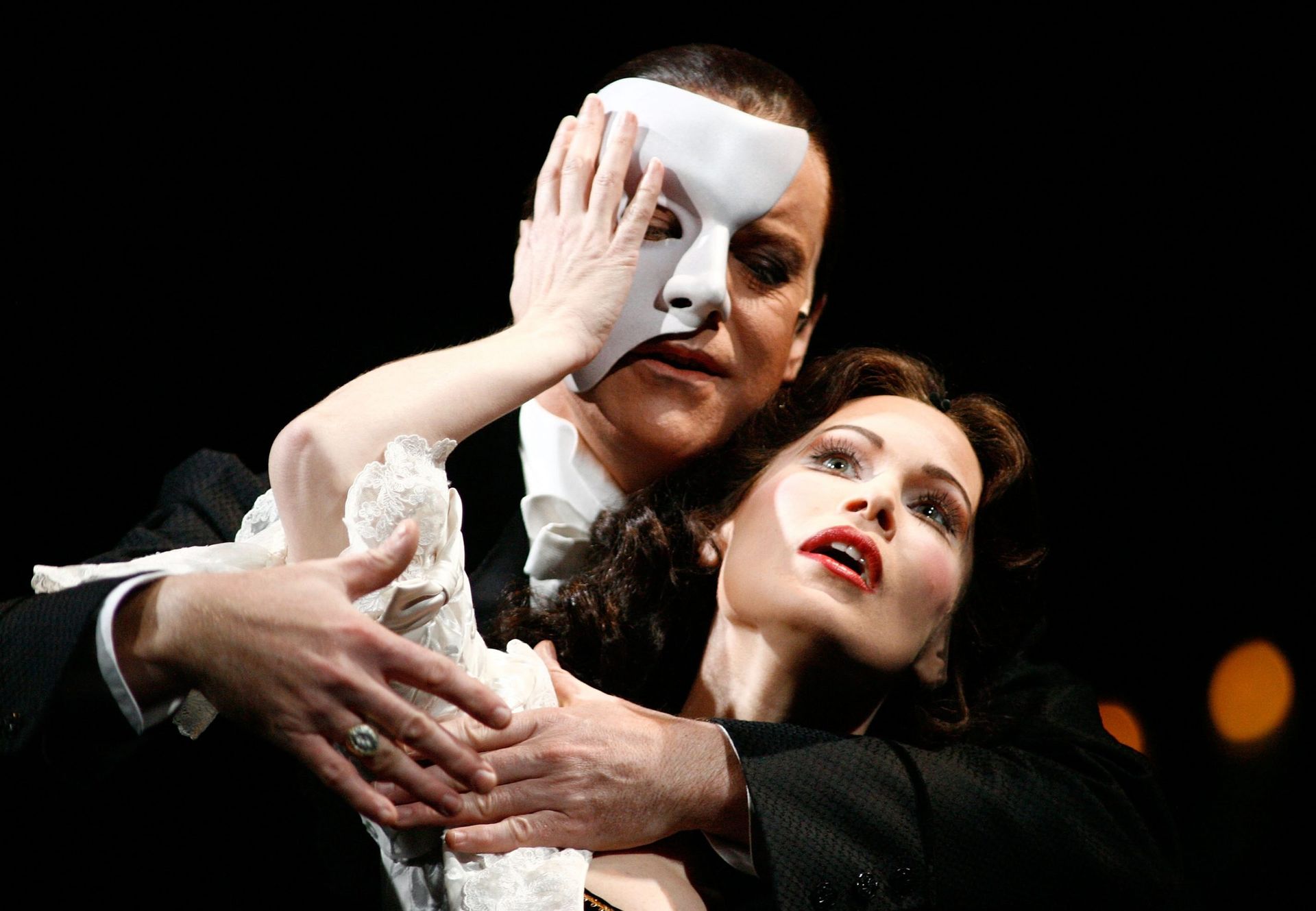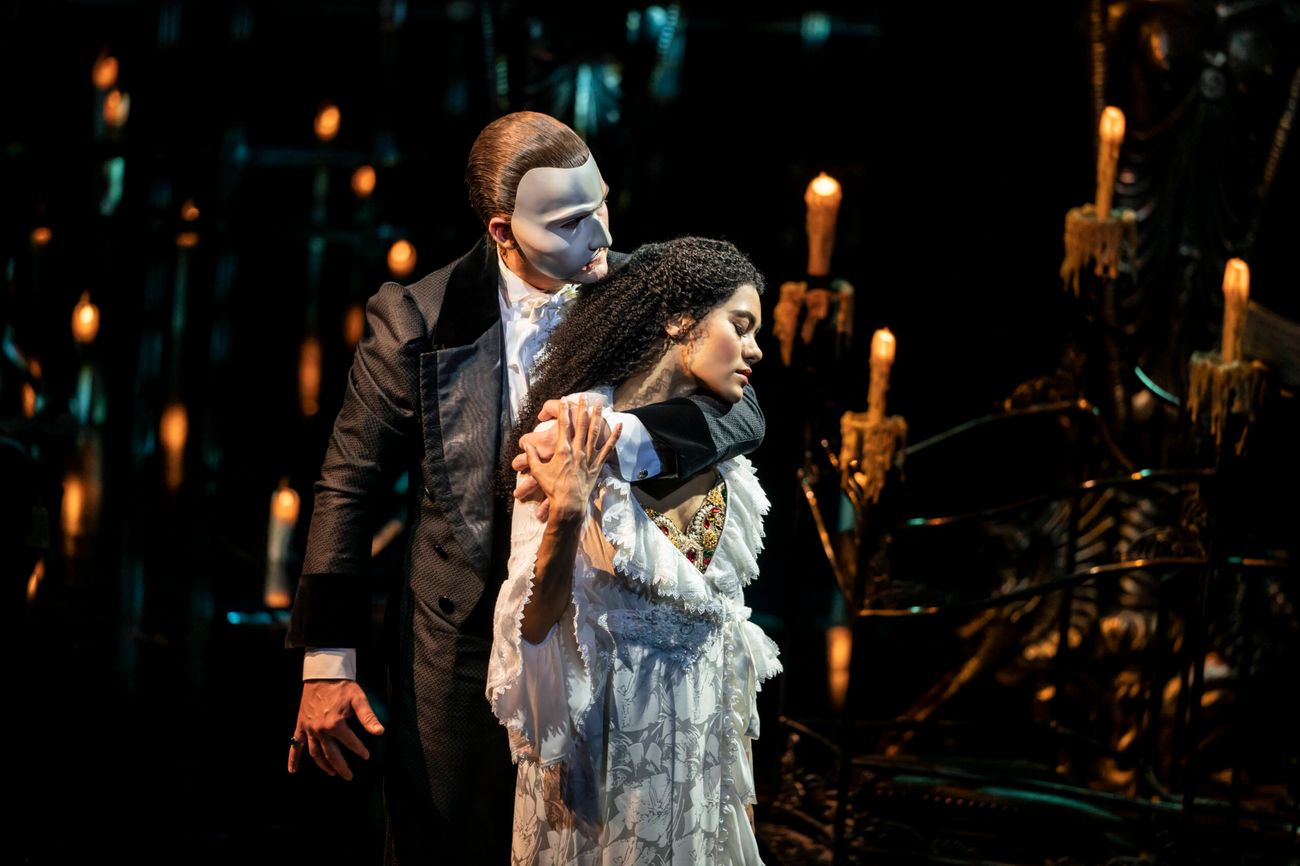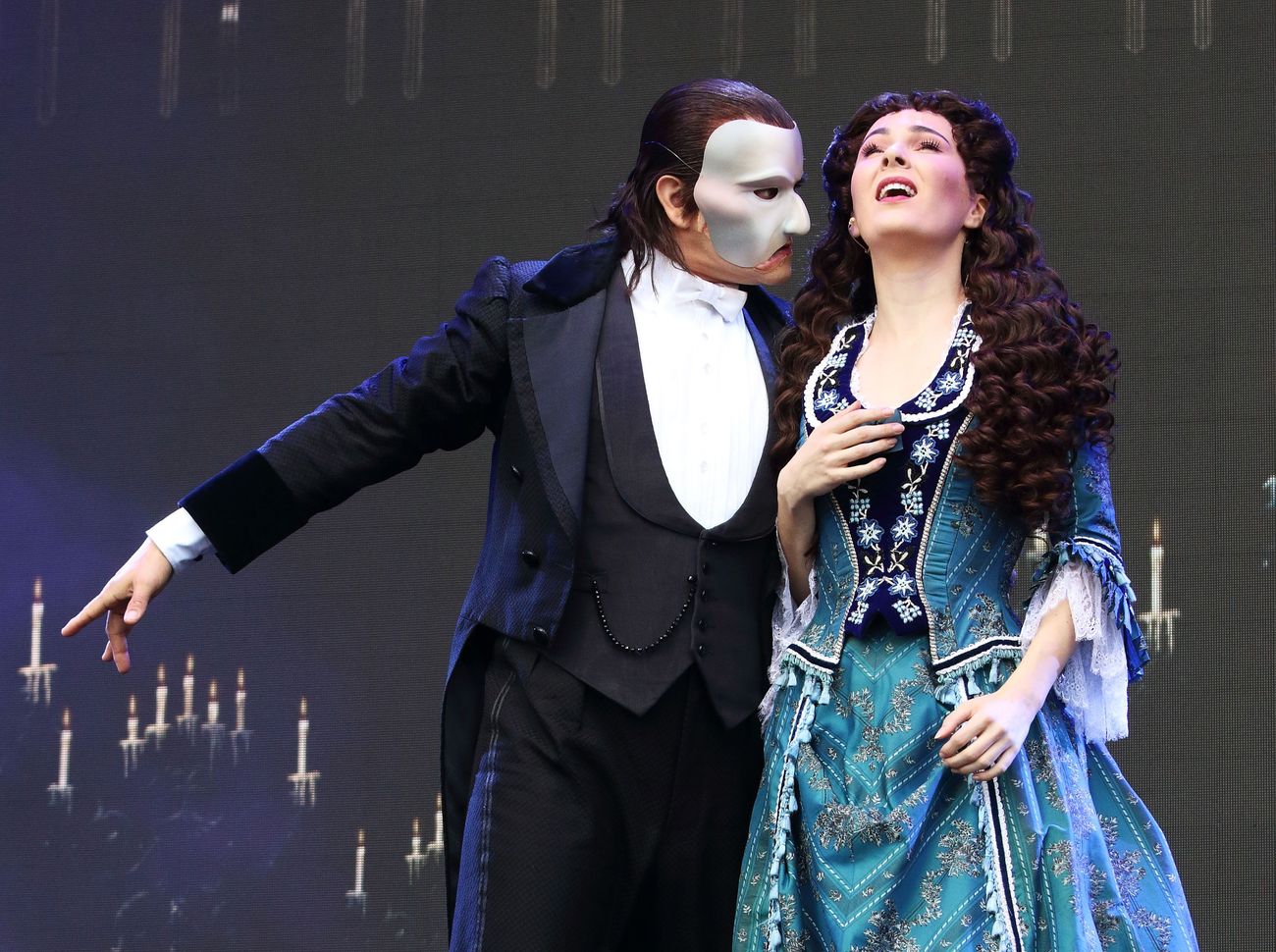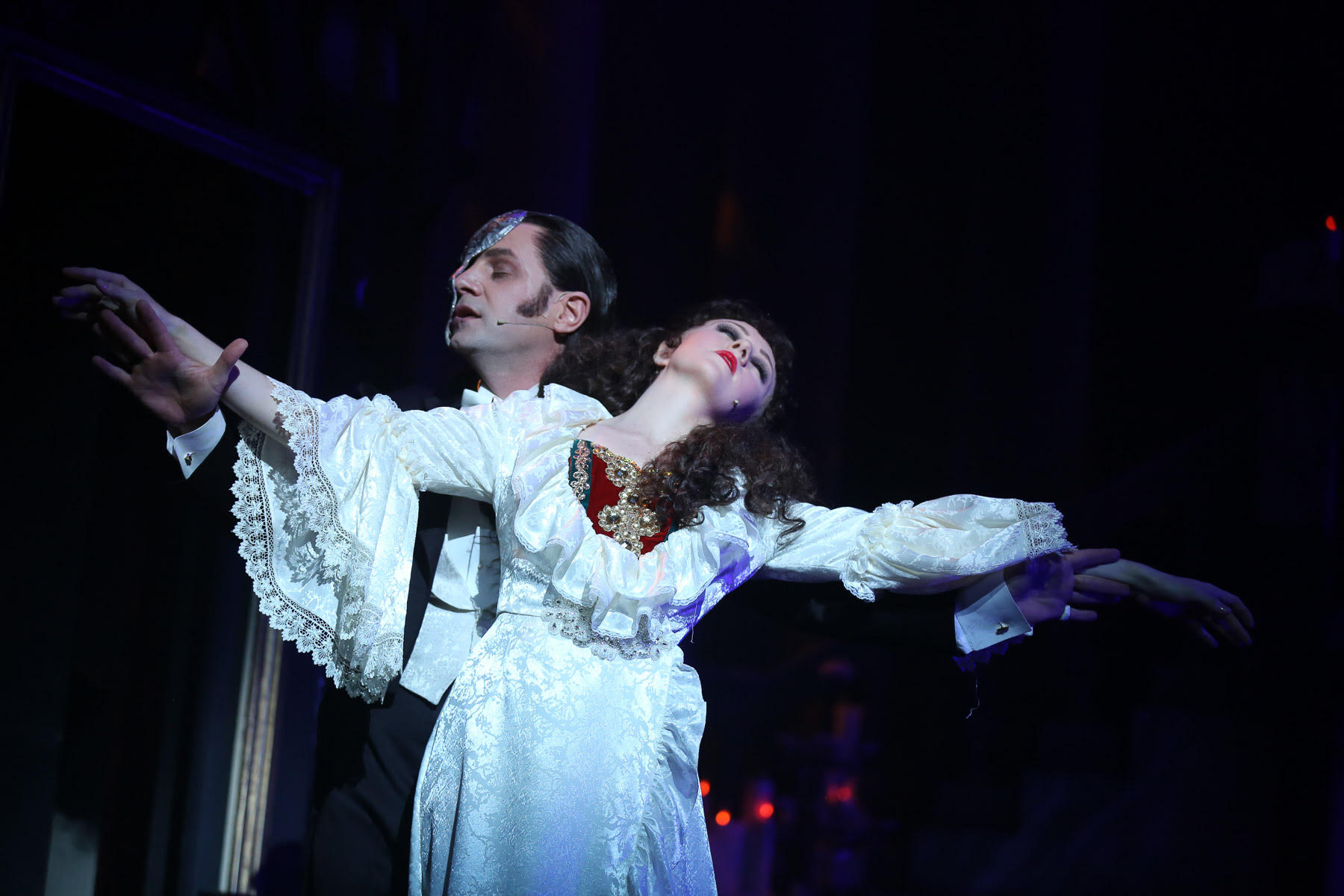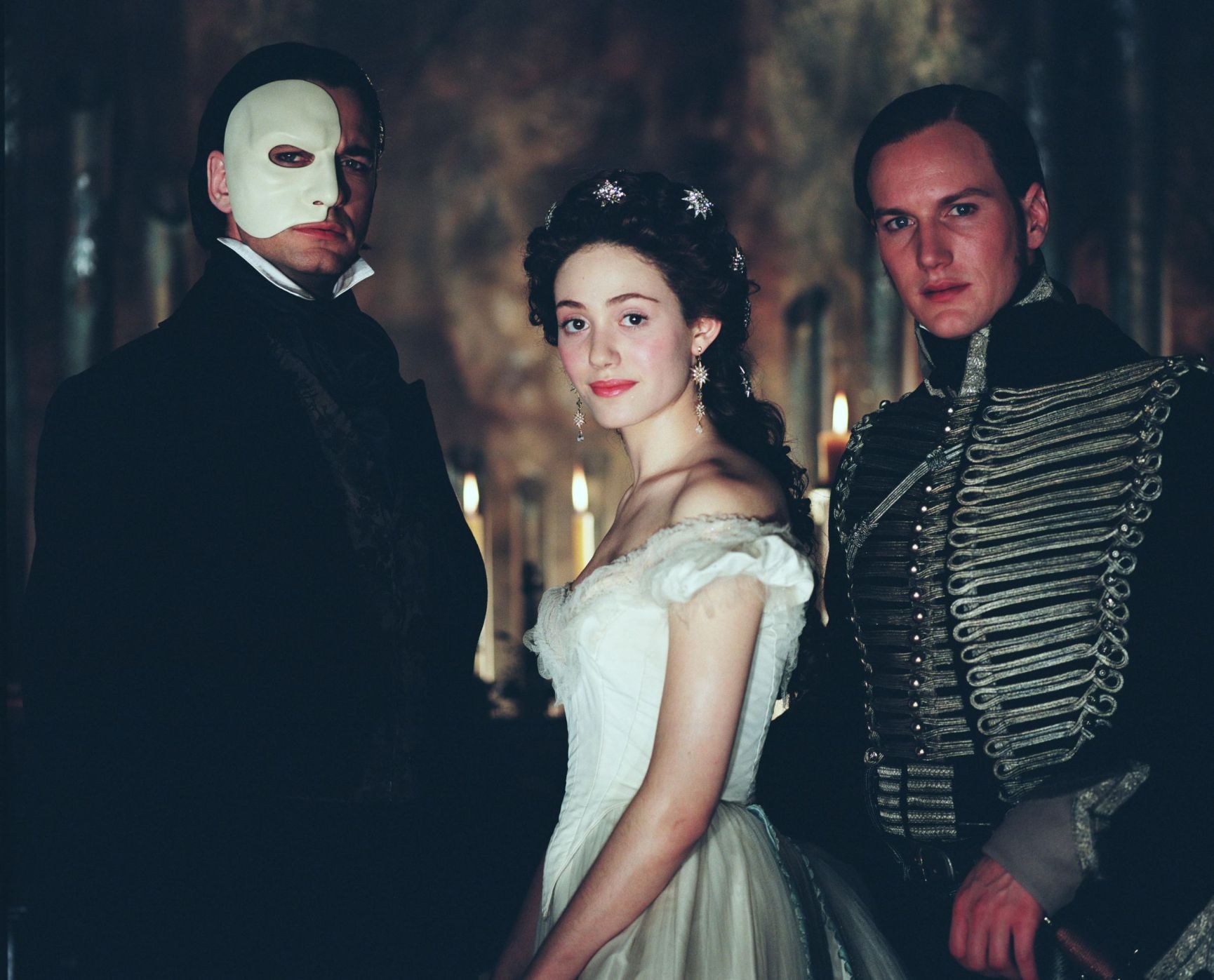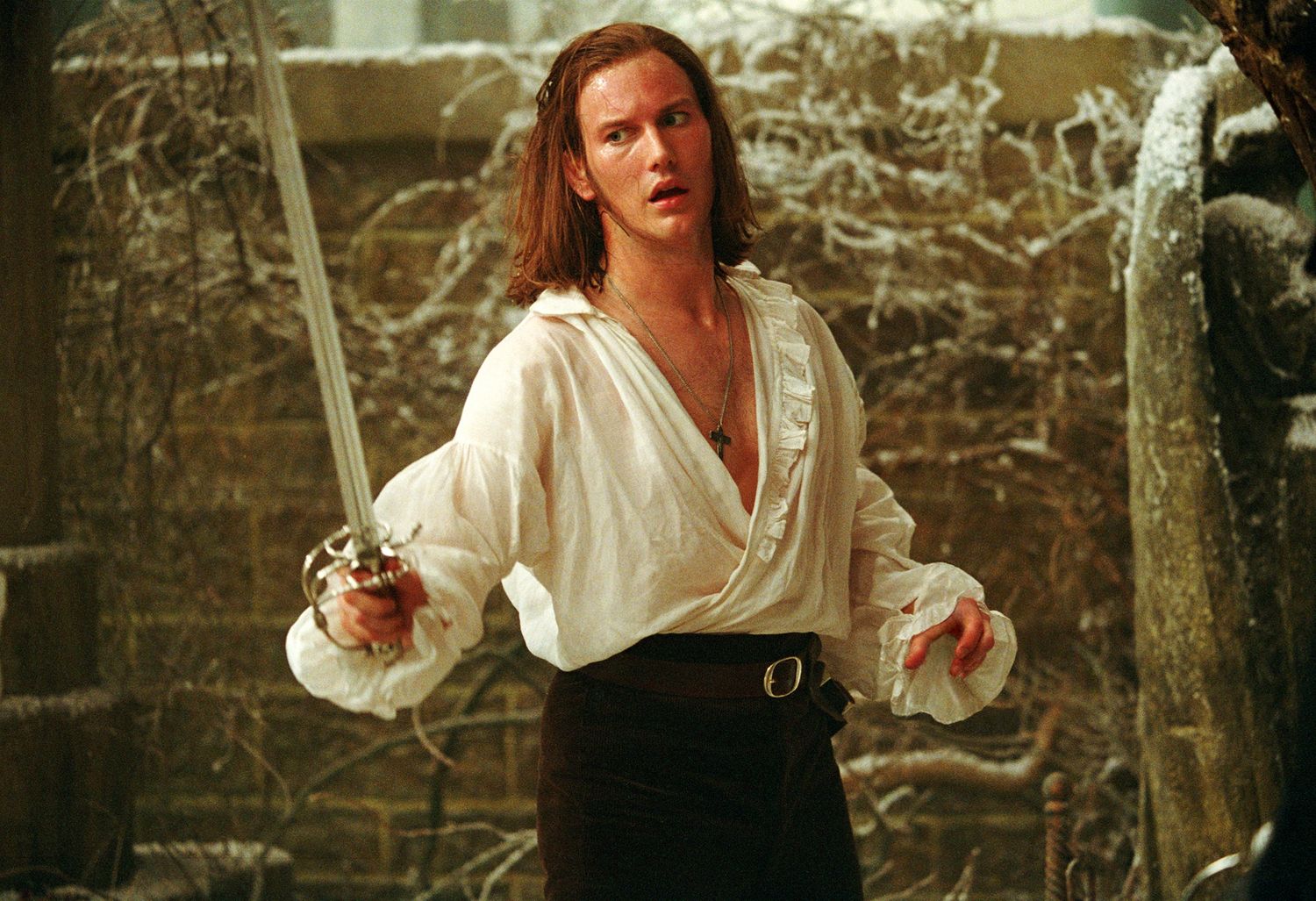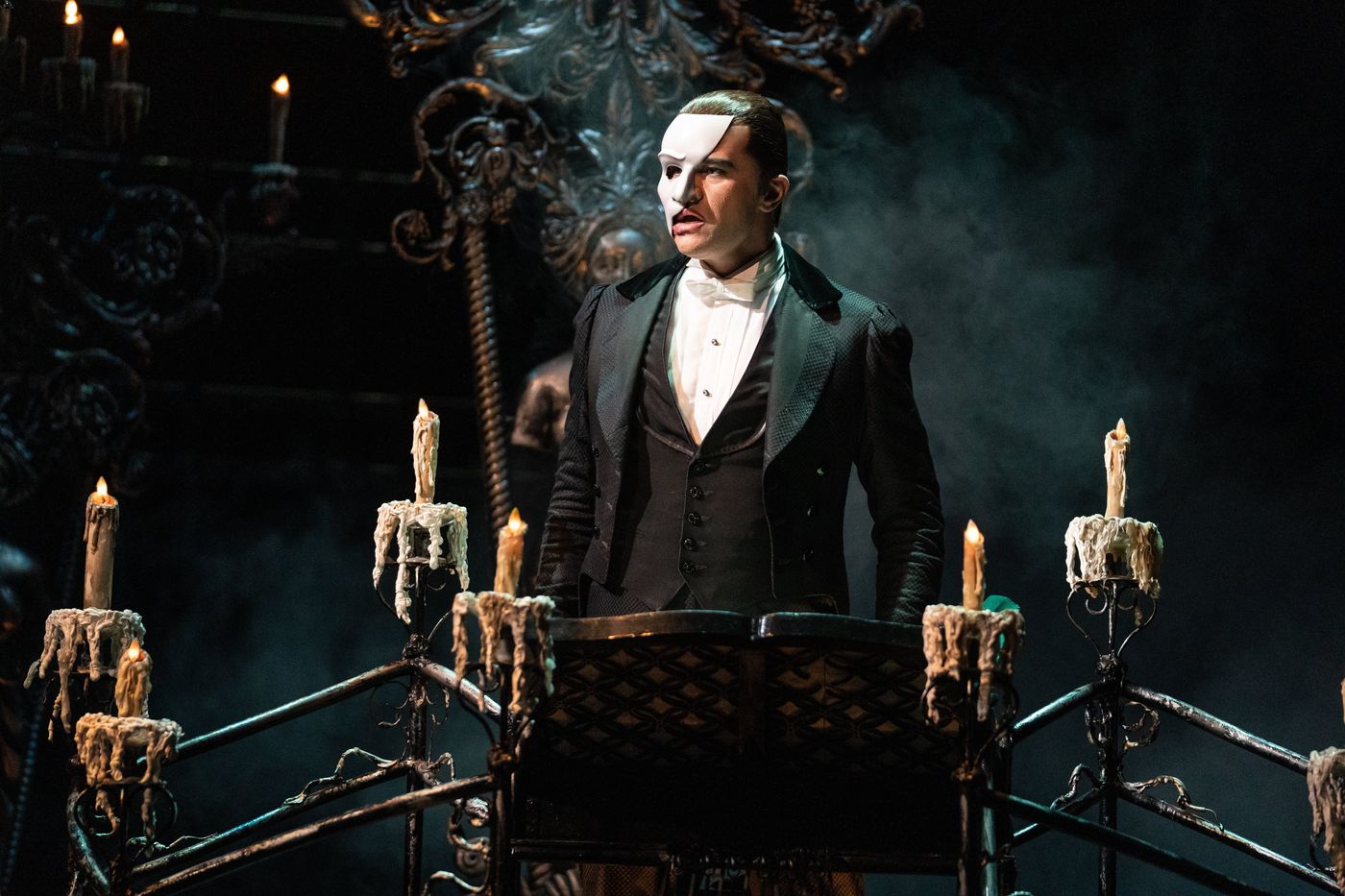Home>Events & Info>Opera>When Was The Phantom Of The Opera Musical Written
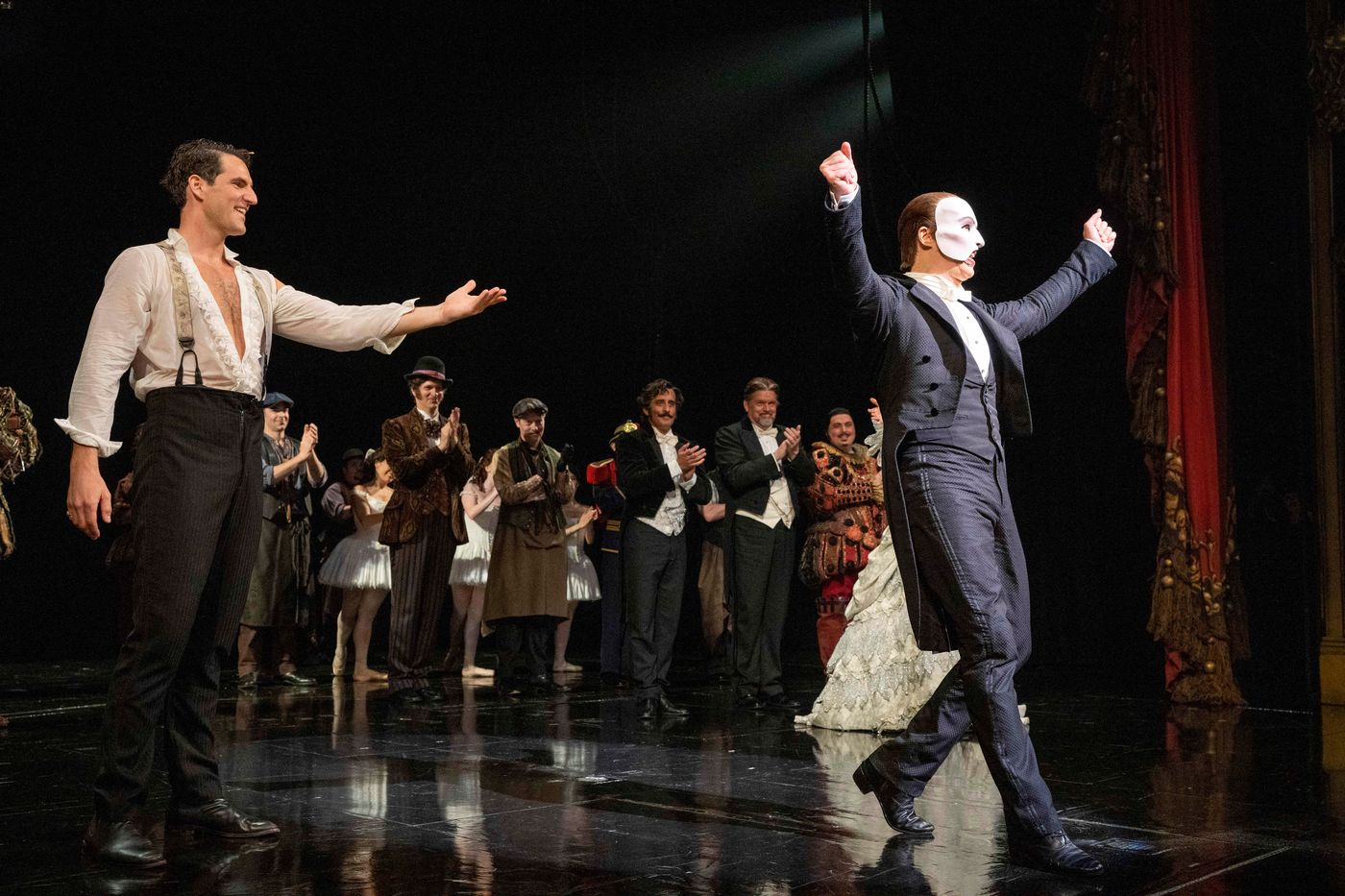

Opera
When Was The Phantom Of The Opera Musical Written
Modified: January 22, 2024
Discover the fascinating history of the Phantom of the Opera musical and learn when this iconic opera masterpiece was written. Immerse yourself in the enchanting world of opera!
(Many of the links in this article redirect to a specific reviewed product. Your purchase of these products through affiliate links helps to generate commission for AudioLover.com, at no extra cost. Learn more)
Table of Contents
Introduction
The Phantom of the Opera is one of the most beloved and enduring musicals in the world. With its mesmerizing music, captivating storyline, and unforgettable characters, the show has captured the hearts of audiences for decades. But have you ever wondered when this beloved musical was originally written?
The origins of “The Phantom of the Opera” can be traced back to the early 20th century when French writer Gaston Leroux penned the novel of the same name. First published in 1910, the novel tells the haunting tale of a disfigured musical genius who lurks beneath the Paris Opera House.
However, it wasn’t until several decades later that this tragic story was adapted into a musical masterpiece by the renowned composer Andrew Lloyd Webber. His adaptation brought the characters and their struggles to life on the stage, enthralling audiences across the globe.
In this article, we will explore the origins of “The Phantom of the Opera,” delve into Andrew Lloyd Webber’s adaptation process, examine its premiere and subsequent success, and discuss its ongoing popularity. Get ready to embark on a journey behind the scenes of one of the most captivating musicals ever created.
The Origins of “The Phantom of the Opera”
The story of “The Phantom of the Opera” originated from the imagination of French writer Gaston Leroux. In 1910, Leroux published a novel titled “Le Fantôme de l’Opéra,” which would go on to inspire countless adaptations, including Andrew Lloyd Webber’s iconic musical.
Leroux’s novel tells the haunting tale of a disfigured musical genius, known as Erik, who hides in the catacombs beneath the Paris Opera House. Obsessed with a young soprano named Christine, Erik tutors her in secret, using his musical prowess to manipulate and control her career. The story is a captivating blend of love, tragedy, and mystery, revealing the inner struggles of its characters.
Leroux’s inspiration for “The Phantom of the Opera” came from various sources. He was inspired by the real-life underground tunnels and passageways of the Paris Opera House, as well as legends of a ghost supposedly haunting the premises. He also drew upon his own experiences as a journalist, frequently exploring the hidden corners and unknown secrets of Parisian society.
The novel initially received mixed reviews upon its release but gradually gained popularity over time. Its unique blend of romance, horror, and suspense captured the imagination of readers, making it a literary sensation. The story’s enduring appeal lies in its exploration of themes such as unrequited love, obsession, and the power of music.
It wasn’t long before “The Phantom of the Opera” caught the attention of filmmakers, leading to the first film adaptation in 1925 starring Lon Chaney as the iconic Phantom. Since then, numerous film, stage, and television adaptations have been created, each adding their own unique twist to the timeless tale.
Little did Leroux know that his novel would serve as the catalyst for one of the most successful and cherished musicals of all time. Andrew Lloyd Webber, with his incredible talent for adapting stories for the stage, seized the opportunity to transform Leroux’s haunting tale into a musical spectacle that continues to enthrall audiences worldwide.
Andrew Lloyd Webber’s Adaptation
Andrew Lloyd Webber, renowned for his ability to turn captivating stories into memorable musicals, was drawn to the allure of “The Phantom of the Opera.” In the early 1980s, he began work on adapting Gaston Leroux’s novel into a stage production that would captivate audiences for years to come.
Collaborating with lyricist Charles Hart and librettist Richard Stilgoe, Lloyd Webber embarked on a creative journey to bring the Phantom’s tragic tale to life. The team worked passionately to translate the novel’s emotional depth and rich characters into a compelling musical experience.
One of the most remarkable aspects of Lloyd Webber’s adaptation is the powerful score that accompanies the story. From haunting melodies to soaring ballads, the music holds a central place in the heart of “The Phantom of the Opera.” Lloyd Webber’s compositions have a timeless quality, inviting audiences into the world of the characters and heightening their emotions.
Another notable aspect of the musical is the iconic mask worn by the Phantom. Designed by Maria Björnson, the mask became a symbol of the character, representing both his physical deformity and his intriguing mystique. The mask has since become synonymous with “The Phantom of the Opera” and is instantly recognizable to fans around the world.
As the adaptation took shape, Lloyd Webber faced the challenge of balancing the romance, horror, and spectacle of the story. His innovative use of technology and stagecraft brought the grandeur of the Paris Opera House to life, immersing audiences in the opulent world of the musical. The stage design, costumes, and lighting all contribute to the immersive experience, transporting viewers into a world teeming with passion, intrigue, and tragedy.
When “The Phantom of the Opera” made its debut in London’s West End in 1986, it received critical acclaim and became an instant hit. The haunting melodies, gripping storyline, and stunning visuals combined to create an unforgettable theatrical experience. The success of the original production paved the way for its adaptation on Broadway, where it continues to mesmerize audiences to this day.
Andrew Lloyd Webber’s adaptation of “The Phantom of the Opera” showcases his ability to create a masterpiece out of an iconic literary work. His meticulous attention to detail, combined with his unique musical talent, has ensured that the story’s timeless themes of love, obsession, and redemption resonate with audiences around the world.
The Creation Process
The creation of “The Phantom of the Opera” was a collaborative effort that involved the dedication and talent of many individuals. Andrew Lloyd Webber led the charge as the composer, with Charles Hart as the lyricist and Richard Stilgoe as the librettist. Together, they embarked on a creative journey to adapt Gaston Leroux’s novel into a captivating musical masterpiece.
The process began with extensive research and immersion into the world of the story. Lloyd Webber and his team studied the original novel, delving into the characters’ motivations, relationships, and conflicts. They aimed to capture the essence of the characters while infusing the story with their own creative interpretation.
In terms of the music, Lloyd Webber drew inspiration from various sources. The score is a beautiful fusion of classical and contemporary elements, with influences ranging from opera to rock. The iconic themes, including “The Music of the Night” and “All I Ask of You,” were meticulously crafted to reflect the emotional depth of the characters and drive the narrative forward.
The development of the lyrics was a careful and collaborative process. Charles Hart, along with Richard Stilgoe, worked closely with Lloyd Webber to ensure that the words not only complemented the music but also conveyed the personalities and inner struggles of the characters. The lyrics add a layer of poetry and emotion to the story, further enhancing the audience’s connection to the show.
As the music and lyrics took shape, the creative team focused on the staging and design of the production. Maria Björnson’s intricate set designs and costumes brought the world of the Paris Opera House to life, showcasing the opulence and grandeur of the era. The use of innovative stagecraft and special effects created a sense of wonder and immersion, drawing audiences into the Phantom’s underground lair and the lavish theater above.
Throughout the creation process, there were numerous workshops, rehearsals, and revisions to fine-tune every aspect of the production. The cast and crew worked tirelessly to bring the show to its full potential, with Lloyd Webber’s meticulous attention to detail ensuring that every moment on stage was a testament to the story’s emotional power.
After several years of development, “The Phantom of the Opera” made its debut in London’s West End in 1986. The combination of masterful storytelling, stunning visuals, and unforgettable music proved to be a winning formula, captivating audiences and critics alike. The musical has since been produced in multiple countries, becoming a global phenomenon that continues to enthrall audiences worldwide.
The creation process of “The Phantom of the Opera” is a testament to the power of collaboration, creativity, and attention to detail. The dedication of Andrew Lloyd Webber and his team brought Gaston Leroux’s timeless tale to life in a way that has resonated with audiences for over three decades.
Premiere and Success
After years of anticipation, “The Phantom of the Opera” made its grand premiere at Her Majesty’s Theatre in London’s West End on October 9, 1986. The debut performance was met with an overwhelming response from both critics and audiences, solidifying its place as a theatrical sensation.
From the moment the chandelier ascended and the haunting tones of the overture filled the theater, the audience was transported into the mesmerizing world of the Phantom. The sheer spectacle of the production, with its intricate set designs, lavish costumes, and dynamic stagecraft, left theatergoers in awe.
The talented cast, led by Michael Crawford in the role of the Phantom and Sarah Brightman as Christine, delivered breathtaking performances that brought the characters to life. Crawford’s portrayal of the tormented and enigmatic Phantom perfectly captured the emotional depth of the character, while Brightman’s stunning vocals and heartfelt portrayal of Christine added a poignant layer to the story.
The critical acclaim for “The Phantom of the Opera” was immediate and widespread. Reviewers praised the musical for its exceptional music, imaginative set designs, and powerful storytelling. The show was commended for its ability to seamlessly blend romance, mystery, and tragedy, creating an immersive experience that resonated with audiences.
The success of the original London production paved the way for the show’s expansion to Broadway, where it premiered at the Majestic Theatre on January 26, 1988. Once again, the musical captivated audiences, receiving rave reviews and earning numerous accolades. “The Phantom of the Opera” went on to win multiple Tony Awards, including Best Musical, and became the longest-running show in Broadway history.
Over the years, “The Phantom of the Opera” has been staged in countless productions worldwide, solidifying its status as a global phenomenon. Audiences continue to be enthralled by the timeless story, the unforgettable music, and the sheer spectacle of the production. The musical has touched the hearts of millions, creating an enduring legacy that surpasses generations.
One of the factors contributing to the ongoing success of “The Phantom of the Opera” is its ability to connect with audiences on a deep emotional level. The themes of unrequited love, obsession, and redemption resonate with people from all walks of life, drawing them into the story and forging a lasting connection.
The enduring success of “The Phantom of the Opera” is a testament to the power of storytelling and the magic of live theater. It is a testament to the talent and vision of Andrew Lloyd Webber, who created a timeless masterpiece that continues to captivate audiences worldwide.
Ongoing Popularity
Decades after its premiere, “The Phantom of the Opera” continues to captivate audiences around the world with its timeless tale and unforgettable music. The musical’s enduring popularity can be attributed to several factors that have contributed to its ongoing success.
First and foremost, the music of “The Phantom of the Opera” has resonated with millions of people. Andrew Lloyd Webber’s haunting melodies, powerful ballads, and memorable songs have become iconic and instantly recognizable. From the yearning notes of “Think of Me” to the dramatic and haunting “Masquerade,” the score has permeated popular culture and has been embraced by fans of all ages.
In addition to the music, the characters themselves have left a lasting impact on audiences. Whether it is the tragic and tortured Phantom, the innocent and talented Christine, or the charming Raoul, each character is richly developed and relatable. Their journeys of love, obsession, and self-discovery resonate with audiences, making them emotionally invested in the story.
The grandiose and visually stunning production values of “The Phantom of the Opera” also contribute to its ongoing popularity. The intricate set designs, opulent costumes, and innovative stagecraft transport audiences to the world of the Paris Opera House. The iconic chandelier, the boat ride through the underground lake, and the Phantom’s lair are just a few examples of the memorable moments that have become synonymous with the musical.
Beyond the theatrical experience, “The Phantom of the Opera” has also enjoyed success through various adaptations and spin-offs. The musical has been adapted into a film, released in 2004, starring Gerard Butler as the Phantom and Emmy Rossum as Christine. It has also been presented in concert versions, performed by acclaimed artists in special engagements and anniversary celebrations.
Furthermore, “The Phantom of the Opera” has spawned spin-offs and other creative ventures. It inspired the sequel musical “Love Never Dies,” which continues the story of the Phantom and Christine. The novel and its musical adaptation have inspired countless fan works, from fan fiction to artwork and cosplay.
Finally, the ongoing popularity of “The Phantom of the Opera” can be attributed to its ability to connect with people on a universal level. The themes of love, longing, ambition, and sacrifice are timeless and resonate with audiences from all walks of life. Whether it is the exploration of unrequited love or the examination of the power of music, the story continues to touch the hearts of audiences and leave a lasting impression.
As the musical continues to be produced in theaters worldwide, captivating new generations of theatergoers, it is clear that “The Phantom of the Opera” has secured its place as one of the most beloved and enduring musicals of all time.
Conclusion
“The Phantom of the Opera” stands as a triumph in the world of musical theater, captivating audiences with its timeless story, unforgettable music, and stunning production values. From its origins as a novel by Gaston Leroux to Andrew Lloyd Webber’s iconic adaptation, the musical has become a global sensation that continues to inspire and enchant.
The enduring popularity of “The Phantom of the Opera” can be attributed to its ability to evoke a wide range of emotions in audiences. It explores themes of love, obsession, and redemption, delving into the complexities of the human experience. The music, with its haunting melodies and powerful ballads, has become ingrained in popular culture, recognized and cherished by fans around the world.
The success of “The Phantom of the Opera” lies not only in its captivating story and mesmerizing music but also in the meticulous attention to detail that went into its creation. From the innovative stagecraft to the intricate set designs, each element adds depth and richness to the production, enhancing the theatrical experience and drawing audiences into the world of the characters.
Over the years, “The Phantom of the Opera” has continued to thrive, delighting audiences with its unforgettable performances and enchanting storytelling. Its ongoing popularity is a testament to the timeless themes it explores and the universal appeal of its characters. The musical has become a cultural phenomenon, inspiring adaptations, spin-offs, and devoted fans who continue to celebrate its enduring legacy.
As the chandelier ascends, and the haunting melodies fill the theater, “The Phantom of the Opera” continues to cast its spell on audiences, transporting them into a world of love, mystery, and extraordinary talent. Its place in the pantheon of musical theater is secure, as it remains a testament to the power of storytelling and the magic of live performance.
So, whether you’ve experienced the musical firsthand or have yet to witness its captivating allure, “The Phantom of the Opera” invites you to step into a world of passion, longing, and theatrical splendor that will leave an indelible mark on your heart.

